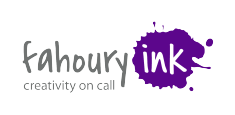AI content generation tools have the potential to help improve your content marketing game. But it’s not as simple as typing in prompts and regurgitating the results.
The right prompts can mean the difference between outputs that are spot on or totally off the mark. And considering there’s a limit to prompts you can enter, efficiency matters.
ChatGPT-4, for example, will only allow you to enter 25 prompts in a three-hour period. So it’s not just what you ask of your trusty AI sidekick; it’s how you ask it. What context are you giving it to form the desired response?
Prompts that produce: Getting started
In a recent Marketing Profs webinar, The Art of Crafting Prompts, presenter and skilled brand storyteller Marcus Nelson reveals his secrets for writing AI prompts that yield meaningful marketing content results.
Working with an AI system requires a knack for writing write clear, succinct and machine-friendly instructions. While anything fed to Al that produces a response is technically a prompt, how you phrase it could offer significant variation among the responses.
(Yes, in my head I’m hearing Mom’s voice: “It’s not what you say, it’s how you say it.”)
Nelson shared these four examples of prompt approaches to get started on tailoring a query to best communicate (and reach) your goals.
Interactive. Interactive prompts facilitate interaction and build engagement by asking AI to help you brainstorm. Interactive prompts tend to begin with:
- Give me ideas …
- Let’s create…
- Can you suggest…
Instructional. Taking this approach, you may ask AI explicitly what you need it to do, and then use the output as your starting point. Prompts lead with instructions. For example:
- List out…
- Explain the history of…
- Write a headline about…
Exploratory. Exploratory prompts give you a jumping off point for creating imaginative content. You want to phrase the prompt in a way that will offer you inspiration, like:
- What would it be like if…
- Imagine a world where…
- Describe a day in which…
Scaffolding. Scaffolding prompts are crafted to provide a framework to get a response you can build upon. Think of it as the first layer. To begin, you have to set the premise for AI, before telling it what you need. For example:
- From a child’s perspective…
- You’re the narrator of…
- Think like an expert…
The first leg of the journey
According to Nelson, the prompt is a pathway, not a destination. You might not get the perfect response on your first attempt or even your tenth. Leverage these different approaches and see where they lead you.

